My 50th year on this planet was a busy and momentous one for me. I was in 8 US states and 11 countries, being at or near home for just 111 days, or 30% of the year. Of all thing things I did, one thing I didn’t do was keep up on my blogging. So with a series of catch-up blogs in mind, I’ll try to post just a couple photos from each trip throughout the year.
The Kingdom of Eswatini
In January I visited the Coker-Galloway family in Eswatini
(formerly known as Swaziland) for seven weeks. My friend Andrew and his son Caspar
joined me for the first couple of weeks. The stay included quite a few forays
away from their home in the capital city of Mbabane, and after a fair bit of
catchup work on tour reports on my computer, I made a real vacation out of it. After
deciding to post just two photos from each trip, I decided that was impossible
for the entire Africa trip, so there will be two photos from each outing,
and I’m being generous with the term “outing.”
For example, just getting there was quite an outing. Andrew
and I flew together from Tucson and had a very nice view of Chicago as we
landed.
Then we had a layover in Madrid before our flight to
Johannesburg, overnighting in a cheap hotel and seeing some nice sights,
including this living wall.
We all gathered in Johannesburg, with Kate, Mich, the kids
(who had been in the US for the Christmas break), and Caspar all arriving
around the same time, and took off for the 3 ½ hour drive to Mbabane.
Sibebe
On just the day after we arrived, Andrew, Caspar, and I
visited a protected area called Sibebe just a few minutes’ drive from Kate and
Mich’s House. It’s considered the largest exposed granite pluton (or batholith)
in the world. Next to Caspar in this photo is a really cool plant with
relations that grow in similarly aged rocks in South America. It is Xerophyta
retinervis, quite recognizably in the family Velloziaceae – a Gondwanaland plant
family. This family is a member of a strange and unrecognizable order of plants
that includes Pandanus, Cyclanths (which look more like palms), and the
mycoheterotroph (leafless and living with fungi) Sciaphylla, which I see
growing out of termite mounds in the rainforest understory at Cristalino. Go
figure. I think I’ll give up on trying to understand plant orders, except for
the easy and common Zingiberales, the ginger order.
One of the several lifebirds I had here was the Buff-streaked
Bushchat.
Malalotja Visit #1
The very next day, Kate took the three of us to Malalotja
Nature Reserve, just 25 minutes from their house in Mbabane. It’s a huge,
highland reserve famous for having breeding Blue Swallow, perhaps the rarest
swallow in the world. But despite at least four visits, I never saw one. The
open grassy ridges dominate the landscape, kept open by frequent fires.
The wildflowers are amazing in January. This relative of the
familiar gladiolus is Watsonia pulchra.
Mkhaya
For my 49th birthday on January 9, Andrew and
Kate treated me to an overnight stay at Mkhaya Reserve, mostly famous for its
small population of heavily protected White Rhinoceros. The rhinos here are
rather used to people, and the guides take you on a walking safari to spot
them. This female seemed to be getting rather protective of her calf as she
began walking towards us, and the guide here was urging us to back up and hide
behind the bushes.
Of course, it’s also full of birds. The most photogenic
birds I found during my wanderings near the lodge were these White
Helmetshrikes.
Mbabane
We had just a couple days break back at Kate and Mich’s in
Mbabane, and Andrew and I enjoyed spending time with the kids Mara and Malcolm.
Mich and I took a quick jaunt out to Hawane Reservoir, about
10 minutes up the freeway. This Wing-snapping Cisticola was one of 33 species
we saw there in an hour.
Waterval-Boven
Our next outing was just a 90-minute drive into South Africa
for a weekend camping trip to a famous rock-climbing site near Waterval-Boven. No
rock climbing for me, thank you very much; but I did enjoy the scenery and
watching crazy people do it from a distance.
I also had a blast botanizing and birding in a totally new
area. One of the best birds Mich and I found in the area was this Knysna Turaco.
Pronounced “NICE-na,” it’s a place name in South Africa.
St. Lucia
With barely a pause in Mbabane, Andrew, Caspar, and I rented
a car and drove to St. Lucia on the coast of South Africa not far from the
southeastern border of Eswatini. The draw here for some is the subtropical
coastal climate, making the town a retirement community that reminds me
something of the posh parts of La Jolla, California. But it’s also a small,
rather isolated town adjacent to the iSimangaliso Wetlands Park, a natural area
with lots of large animals, so weekenders and nature lovers also flock here.
It's home to some very localized birds, such as this Rudd’s
Apalis.
Mbabane
On the way back to Mbabane I got caught in a speed trap. If
only we had borrowed Mich’s spare car with diplomatic license plates, they
would have ignored us. I was able to pay the police right there on the side of
the road, less than $4.
Again, we had just a day in Mbabane, and Caspar took the
opportunity to do some rock climbing with Kate and friends at the local
outcropping near a part of town named Waterford. Andrew and I dropped him off
and had to stop for this photo. The climate here is almost perpetually humid and
hazy in summer, so a blast of dry air, presumably from the northwest, made for
a spectacular view of the upper parts of Mbabane.
Kruger National Park
Then we were off again for another weekend camping trip in
South Africa, this time to the famous Kruger National Park just to the north of
Eswatini. In fact, the southern entrance gate is just two hours’ drive from
Kate and Mich’s house. It’s hard to bear posting just two photos from this
amazing long weekend. From the epic herd of elephants in a drying up lake, to the
massive murmuration of Queleas, to good times with friends, it was hard to
beat. So two charismatic megafauna make the cut: my first Leopard (ok, it’s
just a mammal, but WHAT a mammal)…
…and a pair of super cool Saddle-billed Storks.
Mbabane
Back in Mbabane for a few days, it was worth another visit
to Malalotja Nature Preserve for another try for Blue Swallow, but again I
dipped. But the botanizing continued to
be awesome here, for example this stunning orchid Satyrium cristatum.
Another lovely critter was this (obviously poisonous) grasshopper
Dictyophorus spumans. Why obviously? Google “aposematic.” Some internet
sources say dogs have been killed by eating them.
Big Day
On January 26, Mich and I participated in the second annual
Eswatini Birding Spectacular, a big day competition hosted by the Mbuluzi
Game Reserve. The event started on the evening of the 25th with all
groups assembling for a braai at Mbuluzi in the far NE corner of the country.
While scouting I found this amazing flower emerging from the ground, showing no
stem or leaves. It is Hydnora abyssinica, a wholly parasitic member of
the family Aristolochiaceae. As it is pollinated by flies, you can probably
guess what it smells like.
On our scouting day I saw six lifebirds and during the competition
day I had another nine. Our team (Mich and I were joined by Anton, a young
South African doing a southern Africa big year) won second place with 198
species, but we were the first to record Narina Trogon, which won us a prize of
a free weekend at Phophonyane Lodge, where we had this bird.
Mbabane
I then had a good two weeks in Mbabane to catch my breath. I
helped with cooking and shopping, played with Mara and Malcolm, went on walks,
joined Kate at pilates and yoga classes, jogged, went to the movies, and did
natural history exploration in the yard. This is the Southern Tree Agama, Acanthocercus
atricollis, which I saved from the kitchen when it ran in from the garden,
frightening the day watchman and the nanny.
And of course I knitted. Here’s Kate’s sweater in the
process of blocking before I stitched up and gave it to her.
Namibia
Mich was able to escape with me to Namibia for a long
weekend, thanks to the Presidents Day Weekend, an inexpensive non-stop flight
from Johannesburg to Swakopmund, and Kate’s willingness to hold up the house
and kids on her own for several days. It’s painfully hard to pick just two out
of the 375 photos to show here – so many amazing plants, lizards, birds,
insects, and scenery.
My most wanted form of life in Namibia has always been Welwitschia
mirabilis, and we found a small population along a main road before we even
got to the reserve named for this amazing plant. It became the third and final
member of the division Gnetophyta for me, after having finally seen Gnetum
leyboldii last year at Cristalino. The other member, Ephedra, is
widespread and common, even occurring in Oregon.
So, finally after seeing Welwitschia on our first afternoon,
I could enjoy the birds we were seeing. On our second morning of birding we
found a group of stunning Burchell's Coursers feeding
with these Benguela and Stark's Larks.
I had 67 lifebirds in just 3 ½ days, and we really cleaned
up. We were going to be in the country for five nights, but after our third
night we started to realize that we weren’t going to be able to see more than
one or two potentially new birds, which would have required a lot more driving
and luck. So we changed our flights to return home a day earlier, and still
picked up Bradfield’s Swift on our way to the airport, one of the only
possibilities we thought we had missed.
Mbabane
My last week in Mbabane went by quickly. My entire 7 weeks
went by quickly. Cheating a bit, here are four last photos from my last six
days in Eswatini. Birding in the yard resulted in this African Harrier-Hawk on
the chimney.
I created my own recipe for dosas, using rice and dal flour
instead of soaking whole grains and making mess, and I added my own sourdough
starter the night before to kickstart the fermentation process. Filled with
potato curry, these masala dosas got a big thumbs up from Kate’s Indian friend
Jessica who couldn’t believe a white American man in Eswatini could immediately
transport her back to her mother’s kitchen in India.
I joined Kate back up to her local rockclimbing spot near
Waterford, and the Brunsvigia radulosa (family Amaryllidaceae) had reached
its peak by now, mid-summer.
In a knitting frenzy I also knitted Mich as sweater as well.
Here are four of my favorite people in the world, Kate and Mich in the sweaters
(I also knit Mara and Malcolm socks, by the way).



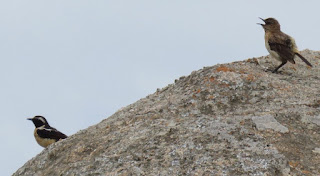







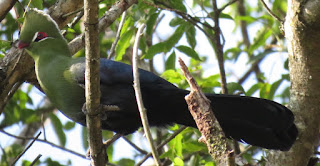
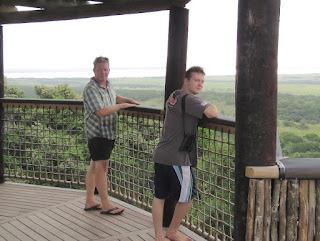
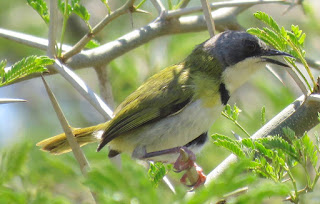





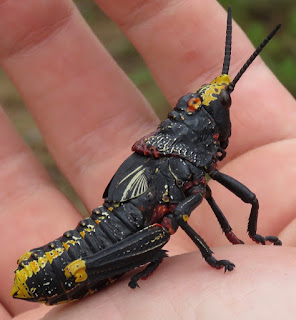

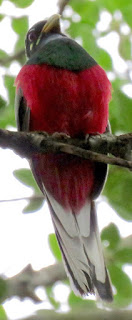


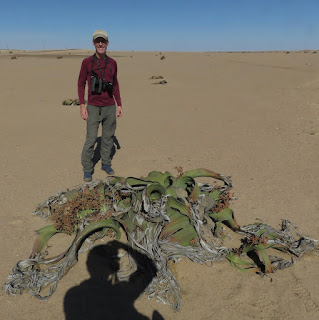
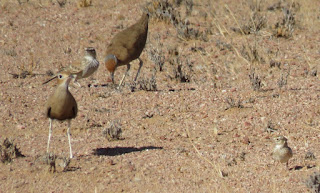


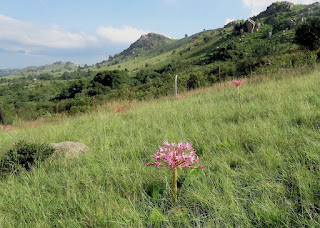






No comments:
Post a Comment